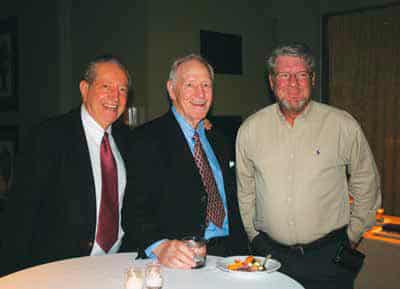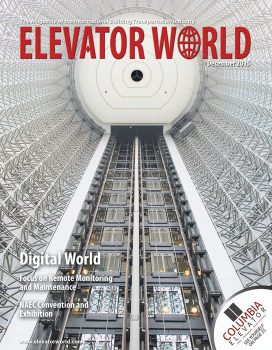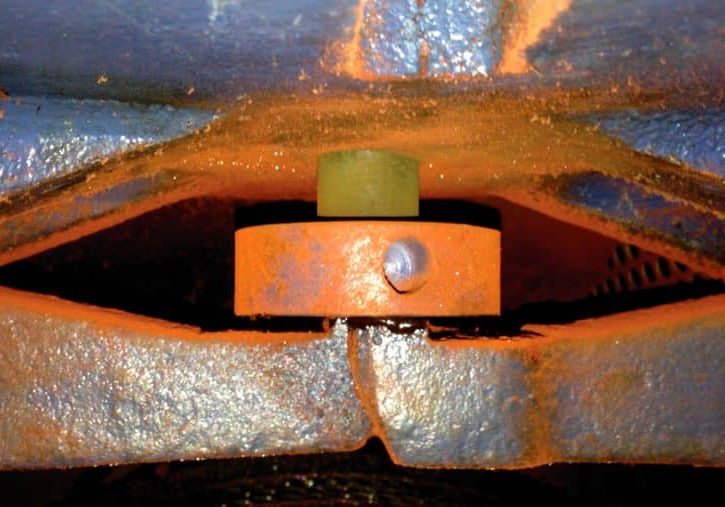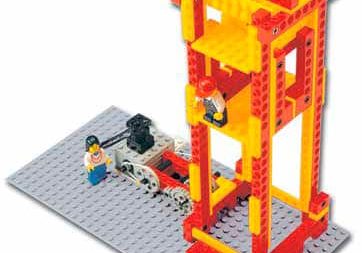Elevators 101 by Zack McCain
Dec 1, 2015

Now in its third edition, Elevators 101 continues to be an Elevator World best seller.
“My boss told me last week that I have the responsibility for all of our elevators.” This indirect plea for help has often been repeated to Zack McCain, prompting him to write a basic introduction to elevators. First published by Elevator World, Inc. in 2004, Elevators 101 serves to provide a resource for managers, persons new to the industry and those in the industry who could use a ready reference to identify equipment and the requirements in various codes and standards.
Running 127 pages, Elevators 101 includes a helpful list of common elevator terms, an introduction to codes and publications and a chapter on escalators and moving walks. The bulk of the book provides information on elevators, including types of elevators; driving machines; control systems, operation and drives; machine spaces, hoistways and pits along with their accompanying equipment; and doors and gates. New to the third edition, information is included on fire-service access elevators, occupant-evacuation elevators, updates on references and a discussion on varying the speed of escalators and moving walks.
McCain says he has “strived to provide the reader with an unbiased presentation of equipment functions, terminology and sources for requirements for various categories of equipment.” He uses it himself to look up information on specific equipment or the location of a requirement.
Writing the book was not an easy task. McCain says:
“Back in the 1960s, when I had facility-management responsibilities, I started trying to learn the basics of elevators and escalators. There was little to no information available, and those working in the field either did not know much or were not willing to share what they knew.”
So, when he set about writing, he says he imagined himself in the position of needing to know the basics of elevators. He discussed this project with many people in the industry to get their help and suggestions, including Richard Baxter of Baxter Elevator; Jim Coaker of Coaker & Co., P.C.; Edward Donoghue of Edward A. Donoghue Associates; Robert B. Peelle, Jr. of The Peelle Co.; Albert Saxer of Otis; Robert Seymour of Robert L. Seymour & Associates, Inc.; and many others. His diligence has been a boon to many in the vertical-transportation industry. Elevators 101 is available from www.elevatorbooks.com.
Interview with Zack McCain (ZM)
EW: How have you seen the elevator industry change over your lifetime?
ZM: The industry as a whole has grown to have a global interest. In the late 1960s and early 1970s, the major manufacturers were U.S. or Canadian based. But now, even the U.S.-based companies have large interests throughout the world. The U.S. and Canadian codes were harmonized in the early part of this century, leading to improvement for both standards.
The introduction of electronics in controls and drives has improved equipment and changed maintenance requirements. Computer-aided design has improved design and reduced component size. Both of these have opened the door for new innovations such as machine-room-less elevators, and improved evaluation and performance standards. On the whole, the industry is more open to change than it was in the 1960s and 1970s.
EW: What has been one of the highlights of your career?
ZM: Participating in the American Society of Mechanical Engineers (ASME) Code activities and teaching classes on elevators for ASME professional development – both of these have been satisfying and rewarding. I have made many friends and met many interesting people in the process. These projects and relationships have led to many other areas such as working with Elevator World, the National Association of Elevator Contractors and the International Association of Elevator Consultants, just to mention a few.
EW: What challenges have you faced over the years? How did you overcome them?
ZM: Over the years, I have experienced many failures and disappointments. I have learned not to dwell on them but to move on. I recently read a quote from Henry Ford, “Whether you think you can, or you think you can’t – you’re right.” This is a reminder that you should never let failures and disappointments stop you from trying.
EW: What is your advice for young elevator technicians in the industry?
ZM: The elevator industry performs a vital service to businesses and industries throughout the world. It is rewarding work, both financially and in terms of job satisfaction. Technicians have a responsibility to perform the best they can to ensure the equipment is safe and reliable, and should be prepared to continue learning and improving throughout their career.
Get more of Elevator World. Sign up for our free e-newsletter.









